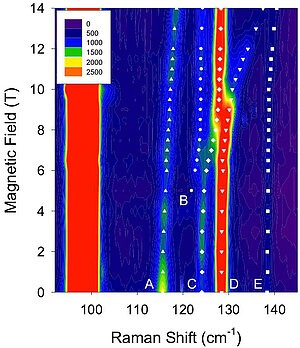Single molecule magnets are subject of intense research efforts due to their ability to switch between two distinct states under the influence of an external magnetic field. Thus, they could potentially pave the way to the ultimate miniaturization of storage devices.
The ultimate goal in this research field is to rationally design molecules that are switchable at room temperature and retain the stored information in long term. However, in practice, interactions of the molecules with their surrounding lead to a „shortcut“ and consequently to a loss of magnetic information. Understanding of how this happens is of crucial importance in order to explore possible work-arounds.
A team of researchers at the Max Planck Institute for Chemical Energy Conversion and the MPI für Kohlenforschung in collaboration with a team of researchers centered at the National High Magnetic Field Laboratory in Tallahassee (USA) have now succeeded for the first time to directly observe the molecule/environment interaction using advanced spectroscopic methods and to interpret the experiments using elaborate models based on quantum mechanics. The results have been published recently in <link https: www.nature.com articles s41467-018-04896-0 _blank external-link-new-window internal link in current>Nature Communications.

